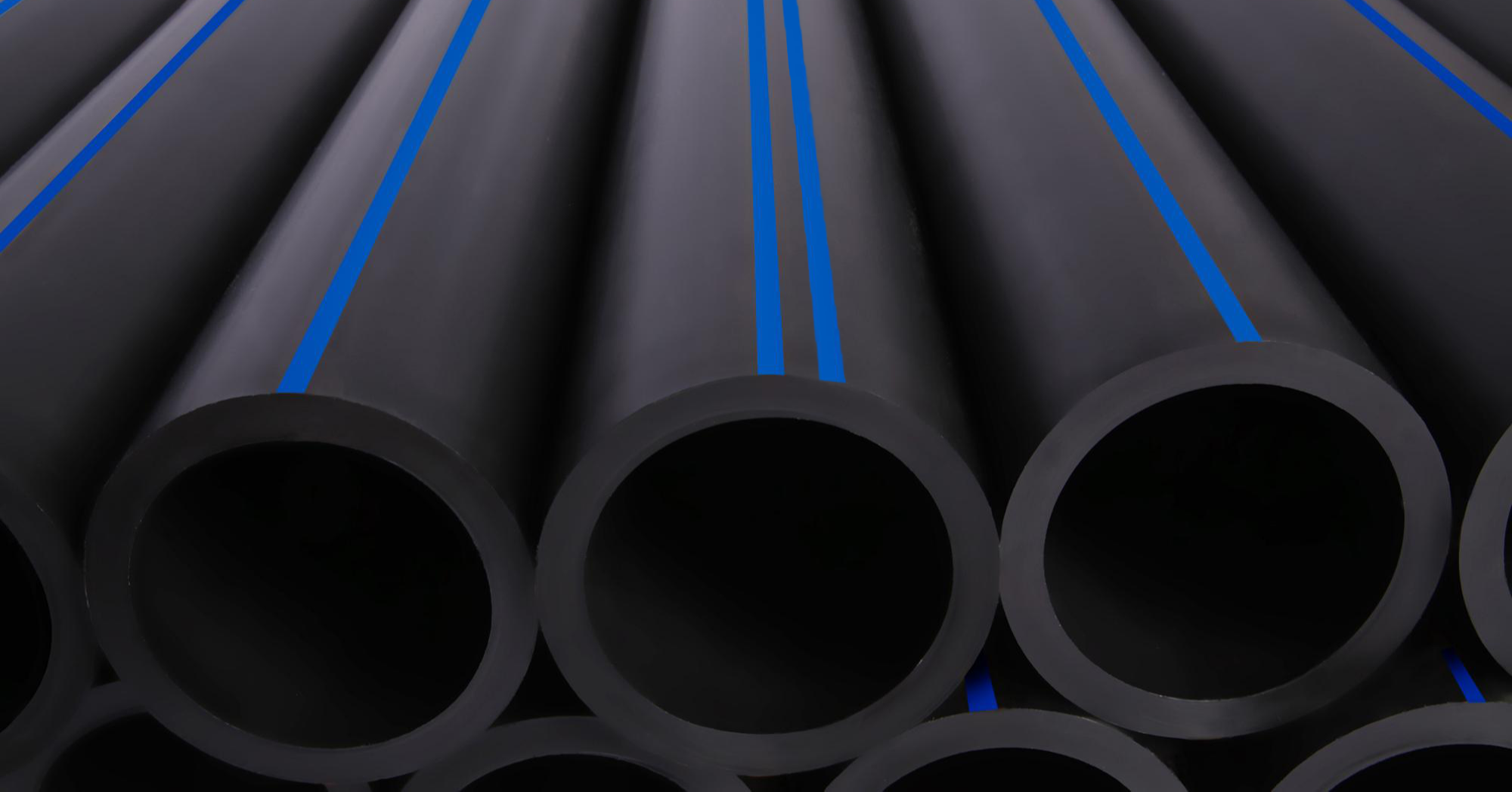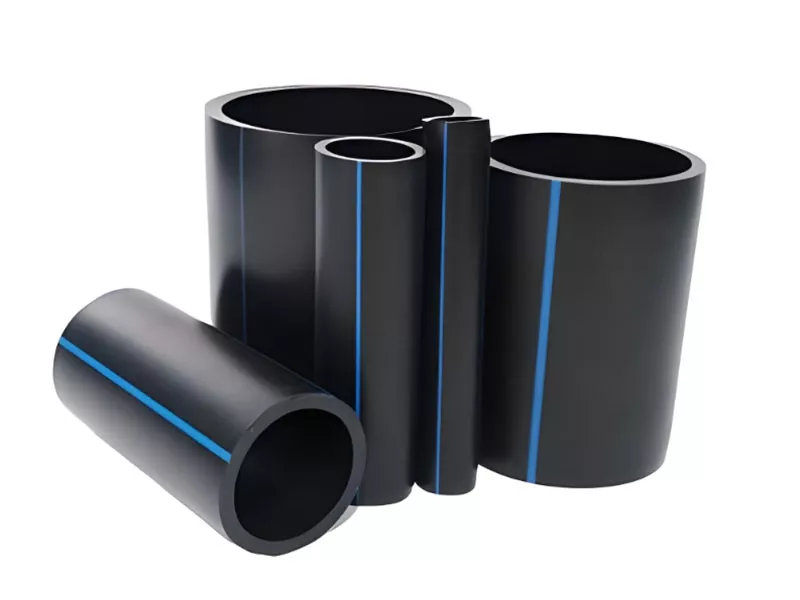FAQs About Texas hdpe pipe manufacturer and Their Process
Wiki Article
Check Out the Manufacturing Refine Behind High-Quality HDPE Pipe and Its Applications
The manufacturing process of top notch HDPE pipelines is detailed and methodical. It begins with the option of basic materials that enhance performance. Following this, ethylene undergoes polymerization to develop resin, which is after that shaped through extrusion. Quality control is critical, making certain that the final product meets strict criteria. The trip of HDPE pipes does not finish with production. Their applications throughout various markets reveal a broader relevance worth checking out.Comprehending HDPE: Characteristics and Advantages

High-density polyethylene (HDPE) is a functional thermoplastic known for its longevity and resistance to different environmental aspects. This material displays superb tensile stamina, making it ideal for demanding applications. Its low-density framework adds to a lightweight item, facilitating convenience of managing and setup. HDPE likewise showcases exceptional resistance to chemicals, which lessens degradation when subjected to severe compounds.
The material's reduced dampness absorption even more boosts its long life, making it perfect for use in pipelines and tank. Furthermore, HDPE is immune to ultraviolet (UV) radiation, guaranteeing that items maintain their honesty even when subjected to sunshine. Its adaptability permits for the creation of elaborate shapes without endangering strength. The eco-friendly nature of HDPE, usually originated from recycled products, includes to its appeal, advertising lasting practices in production. On the whole, these residential or commercial properties and benefits make HDPE a preferred option for different commercial and customer applications.
Raw Product Option for HDPE Manufacturing
The option of basic materials for HDPE production is vital to validate the end product satisfies the preferred requirements and high quality criteria. High-density polyethylene (HDPE) is mainly produced from polymerized ethylene, derived from fossil fuels such as gas or unrefined oil. The top quality of these feedstocks greatly affects the mechanical and thermal homes of the final HDPE.Ingredients additionally play a considerable function in enhancing HDPE's efficiency, consisting of antioxidants, UV stabilizers, and colorants, which enhance resilience and resistance to environmental variables. The option process need to take into consideration not only the chemical make-up of the raw materials but also their handling attributes to ensure efficient production.
The sourcing of raw materials ought to prioritize sustainability and conformity with environmental guidelines, as accountable techniques are necessary in today's market. Eventually, careful basic material option lays the structure for generating premium HDPE pipes appropriate for varied applications.
The Extrusion Process: Shaping HDPE Pipeline
The extrusion process plays a vital duty in forming HDPE pipes, beginning with meticulous material preparation strategies that ensure ideal circulation and consistency. Just as vital is the style of the die, which straight influences the last dimensions and surface area high quality of the pipe. With each other, these aspects contribute substantially to the performance and high quality of HDPE pipeline production.Material Prep Work Techniques
Efficient production of HDPE pipelines starts with precise material prep work methods, specifically the extrusion procedure. Throughout this stage, high-density polyethylene resin is first dried to get rid of dampness, making sure excellent flow qualities. The resin is then fed into the extruder, where it goes through heating and melting, changing right into a thick state. This heating process is thoroughly managed to maintain the material's integrity and performance. The liquified HDPE is compelled through a die, forming it right into a continual pipeline kind. Proper temperature administration throughout extrusion is crucial, as it straight affects the material's residential or commercial properties and the last item high quality. When formed, the HDPE pipeline is cooled and reduced to specified sizes, prepared for subsequent processing and applications.Die Design Significance
Accuracy in die style plays an essential duty in the extrusion process of HDPE pipelines. The die works as the final shaping tool, directly affecting the pipe's dimensions, wall thickness, and surface finish. A well-designed die guarantees consistent product flow, minimizing defects such as irregularities and vulnerable points. The geometry of the die have to be maximized to suit the certain properties of HDPE, including its thickness and thermal actions during extrusion. In addition, the cooling rate of the product as it passes through the die can substantially influence the pipeline's architectural stability. Consequently, spending in advanced die technology is essential for producers aiming to produce top quality HDPE pipelines that satisfy industry requirements and customer expectations.Quality Assurance Actions in HDPE Manufacturing
Numerous variables influence the top quality of HDPE pipe manufacturing, effective quality control measures are critical to assure uniformity and reliability in the final product (Pipe Manufacturing Midland TX). Key quality assurance methods consist of extensive product inspection, confirming that the raw polyethylene meets established standards for purity and density. During the extrusion process, parameters such as temperature, stress, and cooling time are very closely kept track of to maintain dimensional precision and architectural integrityFurthermore, post-production testing is essential; manufacturers usually carry out hydrostatic examinations to analyze the pipe's toughness and resistance to pressure. Aesthetic inspections for surface defects better improve quality control. Accreditation from relevant criteria organizations, like ASTM or ISO, offers an added layer of integrity. By applying these thorough top quality control actions, producers can decrease flaws, improve efficiency, and guarantee that the HDPE pipelines satisfy the particular demands of numerous applications, eventually resulting in client contentment and count on the product.
Applications of HDPE Pipeline Across Industries
HDPE pipes are utilized across numerous industries because of their toughness and versatility. In water distribution systems, they guarantee effective shipment, while in wastewater administration, they give trustworthy solutions for waste transport. Furthermore, farming watering networks benefit from HDPE's resistance to rust and versatility, making it an ideal choice for contemporary farming methods.
Water Circulation Solutions
A considerable number of industries depend on high-density polyethylene (HDPE) pipes for reliable water circulation systems. Understood for their resilience and resistance to rust, HDPE pipes are widely used in metropolitan water system networks, farming watering, and commercial applications. Their lightweight nature assists in very easy handling and installation, decreasing labor prices and time. Additionally, HDPE pipelines can suit numerous stress degrees, making them ideal for both low and high-pressure systems. hdpe pipe fittings Midland TX. The flexibility of the product enables seamless integration into existing infrastructure, reducing the requirement for comprehensive excavation. Furthermore, HDPE's resistance to chemical leaching assurances that the water supplied stays risk-free and clean, making it an excellent choice for preserving the quality of safe and clean water across numerous industriesWastewater Management Solutions
Reliable water distribution systems likewise lead the way for innovative wastewater monitoring options, where high-density polyethylene (HDPE) pipelines play a considerable duty. Popular for their durability and resistance to rust, HDPE pipes are ideal for delivering wastewater in numerous settings. Their flexibility allows for very easy installation in intricate settings, decreasing the demand for comprehensive excavation. Additionally, HDPE's smooth interior surface minimizes rubbing, enhancing circulation prices and effectiveness. These pipes are also immune to chemical leaching, making certain that contaminants do not endanger the surrounding setting. Industries, districts, and treatment facilities progressively rely upon HDPE pipelines for their reliability and longevity, making them a favored selection for modern-day wastewater monitoring systems. This adaptability emphasizes the critical relevance of HDPE pipes throughout many applications.Agricultural Irrigation Networks
Agricultural watering networks profit significantly from using high-density polyethylene (HDPE) pipes, which offer effective and reliable water shipment to crops. HDPE pipelines are lightweight, making them simple to deliver and install, while their flexibility permits numerous setups in diverse terrains. These pipes show superb resistance to deterioration, chemicals, and UV radiation, making certain longevity in extreme agricultural environments. Additionally, their smooth interior surface reduces rubbing loss, enhancing water flow and minimizing power costs related to pumping. The durability of HDPE pipelines, commonly going beyond half a century, adds to lower maintenance and replacement expenditures. Farmers increasingly count on HDPE pipes to improve irrigation performance and promote sustainable farming practices, ultimately leading to improved plant returns and resource conservation.
Future Patterns in HDPE Pipeline Technology
As the demand for sustainable and effective framework expands, developments in HDPE pipe modern technology are positioned to change numerous sectors. Emerging trends include the combination of clever modern technologies, such as sensors and IoT capabilities, which assist in real-time tracking of pipeline conditions, lowering maintenance costs and avoiding leakages. In addition, the growth of advanced manufacturing strategies, such as 3D printing, is making it possible for the production of complex, tailored pipe layouts that accommodate specific task demands.Furthermore, the concentrate on recycling and circular economic climate techniques is driving the technology of HDPE pipelines made from recycled materials, boosting sustainability. Enhanced jointing approaches, such as electro-fusion and mechanical fittings, are also boosting installation effectiveness and integrity. Finally, the expanding emphasis on environmental guidelines is pushing makers to adopt greener production procedures, making certain that HDPE pipelines not only satisfy sector requirements however also cultivate an even more sustainable future for framework development.
Often Asked Inquiries
How Does HDPE Compare to Other Plastic Materials?
HDPE surpasses lots of other plastic materials regarding durability, chemical resistance, and flexibility. Its reduced density and high tensile stamina make it suitable for various applications, usually exceeding options in both performance and longevity.What Are the Environmental Impacts of HDPE Manufacturing?
The ecological influences of HDPE production include greenhouse gas discharges, energy consumption, and possible contamination from manufacturing procedures. Additionally, incorrect disposal can lead to soil and water contamination, elevating problems concerning long-lasting environmental impacts.Can HDPE Pipeline Be Recycled?
Yes, HDPE pipelines can be recycled. Numerous facilities approve used HDPE for processing, changing it into new items. This recycling adds to sustainability initiatives, minimizing plastic waste while preserving resources and power in the production cycle.What Is the Life Expectancy of HDPE Water Lines?

How Do Temperature Variants Impact HDPE Pipeline Efficiency?
Temperature variants substantially impact HDPE pipe efficiency, affecting versatility and toughness. Heats can bring about softening, while reduced temperature levels might create brittleness, read more eventually affecting the pipeline's durability and viability for various applications in diverse atmospheres.Report this wiki page